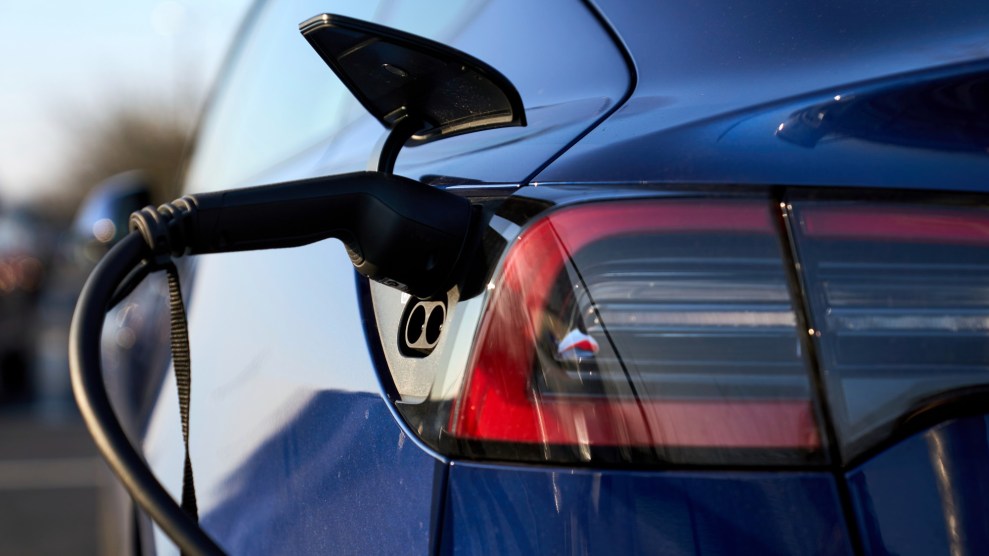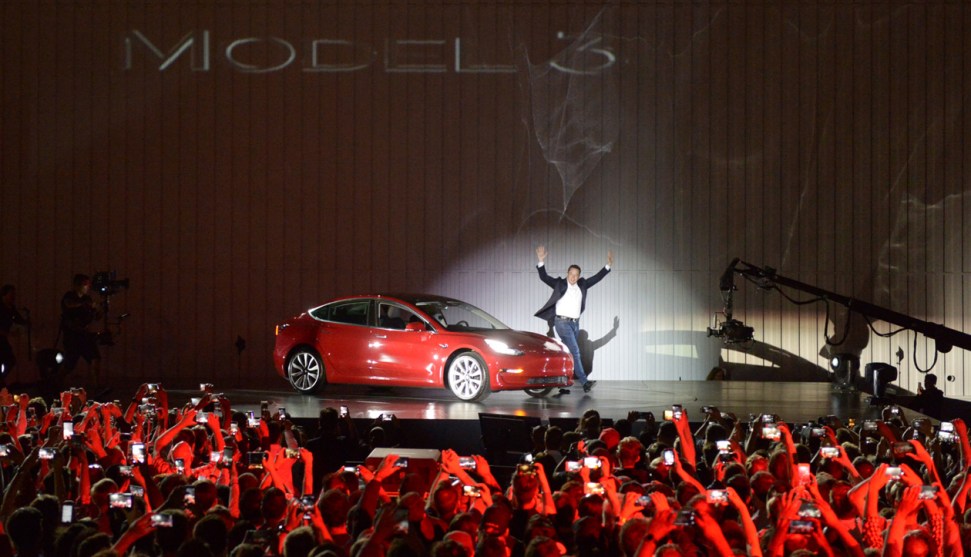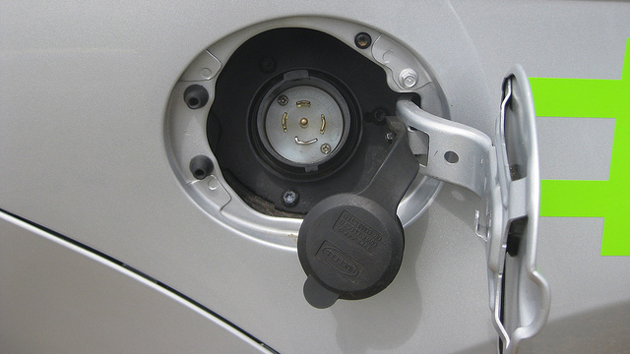
John Walton/PA Wire/PA Images/AP
This story was originally published by Inside Climate News and is reproduced here as part of the Climate Desk collaboration.
Researchers at Argonne National Laboratory and the Illinois Institute of Technology have created a solid-state battery that could be used to vastly expand the range of EVs, and it could unlock the ability to use batteries on short-haul aircraft and heavy trucks.
But for now, it’s a lab-scale battery cell, about the size of a dime.
I spoke with two of the leaders of the research this week.
“I was doubtful in the beginning,” said Larry Curtiss, a senior chemist at Argonne.
He has been at the lab for more than 40 years and knows from experience that initial results might not be repeatable. But he and his colleagues from the two Chicago-area institutions found that their work could be replicated, with the results published in February in the journal Science.
Before I go on, here are some battery basics:
Most EVs today run on lithium-ion batteries. When the batteries are charging, ions flow from one side (the cathode) to the other side (the anode), and then reverse when discharging. The ions make this trip by passing through an electrolyte, which is a liquid or gel.
In solid-state batteries, the electrolyte is solid, often a ceramic material. The overall battery can hold more electricity per unit of mass than current lithium-ion batteries for a variety of design reasons.
Automakers and battery manufacturers are working to develop solid-state batteries. They see the potential for longer ranges due to higher energy density, and the batteries would be safer because they are less flammable than current lithium-ion systems.
The design at Argonne and Illinois Tech is a version of a lithium-air battery, a category that has been around for about a decade but hasn’t yet had a commercial breakthrough.
In this specific battery, the anode is made of a solid form of lithium. The “air” part comes from outside air that flows in through tiny holes in the cathode. Oxygen from the air reacts with lithium ions that have passed through the solid electrolyte. The electrolyte is made from a combination of ceramic and polymer materials—a solid that still allows for the passage of ions.
To understand what makes this battery different, it helps to know that in previous lithium-air batteries each oxygen molecule would react with one or two electrons.
In this new battery, each oxygen molecule reacts with up to four electrons.
Think of this like when you’re unloading a trunkful of grocery bags from the car. It’s a lot more efficient if you can carry four bags on each trip as opposed to one or two.
So why are the oxygen molecules in this battery reacting with more electrons? It’s complicated, and the researchers are still in the process of answering that question. But the most likely answer is that the combination of materials results in an environment that cajoles the oxygen to have the four-electron reaction.
The real-world implications of the technology are substantial, with the potential for batteries that could power an EV for 1,000 miles on a single charge. That’s a lot, even when compared to other designs for solid-state batteries, and it’s three to four times more than most current EVs.
Mohammad Asadi, a chemical engineer at Illinois Tech, was another leader of the team that developed the battery and a co-author of the paper.
“It’s all about the chemistry and energy density,” he said about what makes this battery special.
For him, one of the most exciting aspects of this research is the potential to develop batteries for use in maritime transport and aviation. Those modes of transportation need so much energy that battery packs have been impractical because of the substantial size and weight that would be needed.
When looking at the potential for cars, the battery could be used for EVs with super long ranges, but I don’t see that as the most practical use. A better use would be in helping to make EVs that have much smaller battery packs than today but can still have substantial ranges. This would reduce a car’s weight and its cost.
But this is early-stage research that’s probably a decade or so away from hitting the market—if it ever hits the market. One of the initial challenges would be turning the lab-scale cell into a prototype, which would be about 100 times larger.
In the meantime, automakers and battery manufacturers are just a few years from releasing the first cars with solid-state batteries.
Toyota said last year that it would have a solid-state battery by 2025, but it would be in a gas-electric hybrid as opposed to an all-electric vehicle. The decision not to build an EV is a head-scratcher, but it is in line with Toyota’s continuing fondness for hybrids.
Every major automaker is working on solid-state batteries, either in-house or through partnerships with battery manufacturers like QuantumScape and Solid Power. The plans vary, but they point toward having a few EVs with the batteries on the market within about five years and having a lot more on the market in the early 2030s.
Nissan set a goal two years ago to ramp up solid-state battery production at a pace to begin selling an EV with the technology by 2028, and a company executive said last month that the company is on track to hit that goal.















